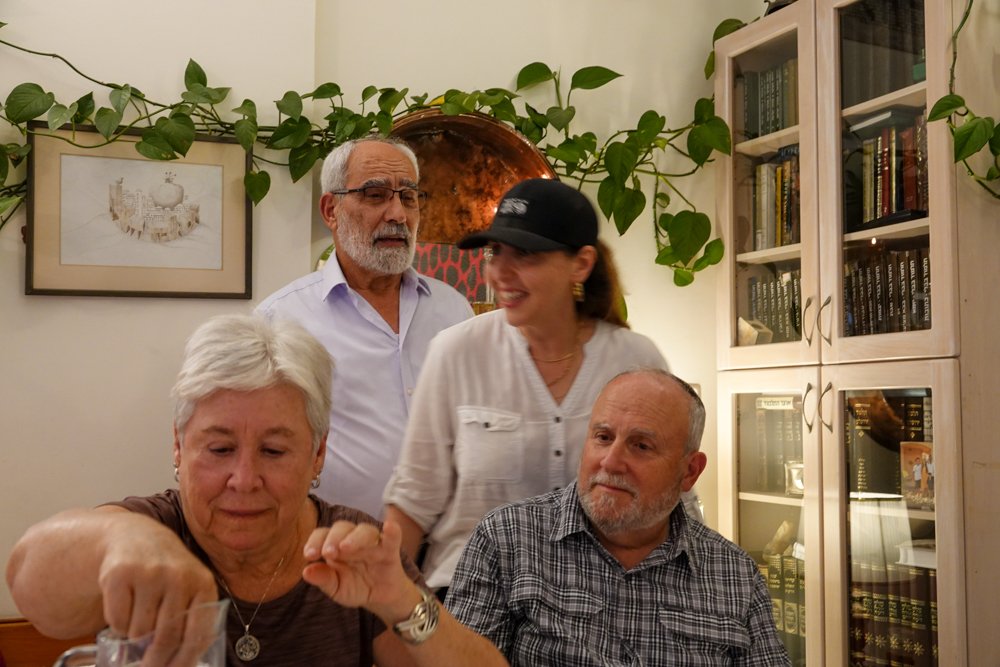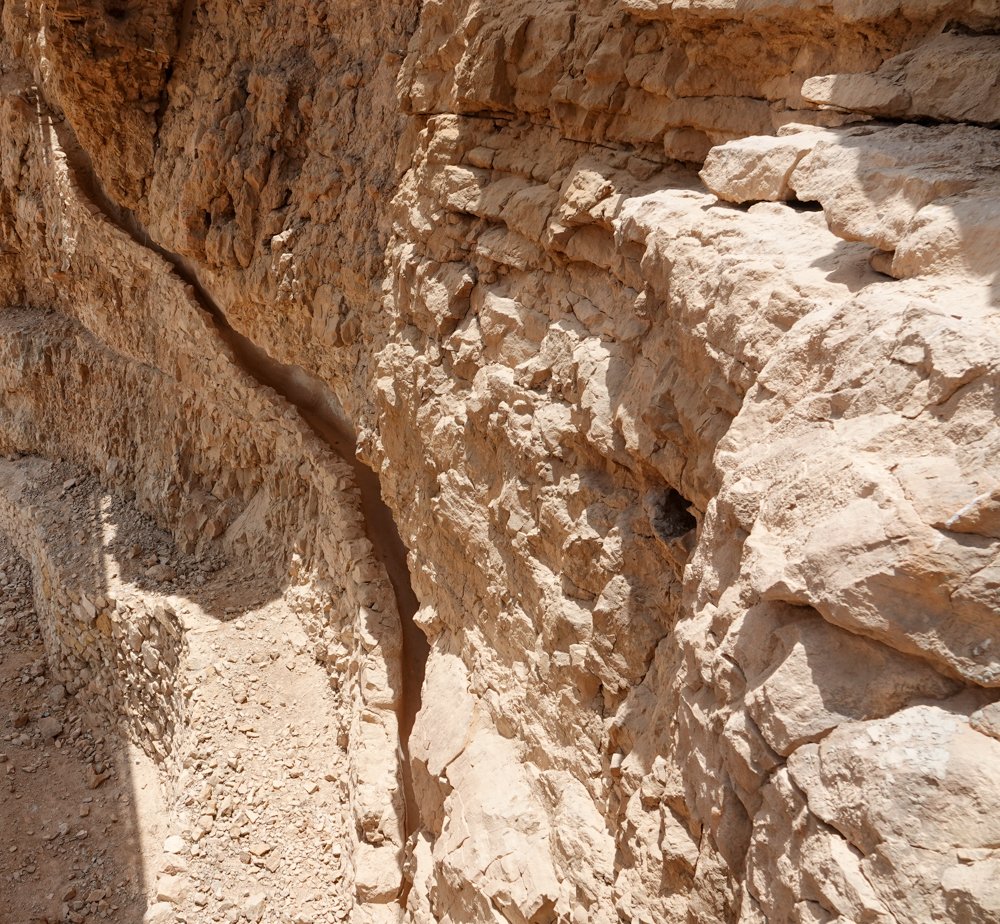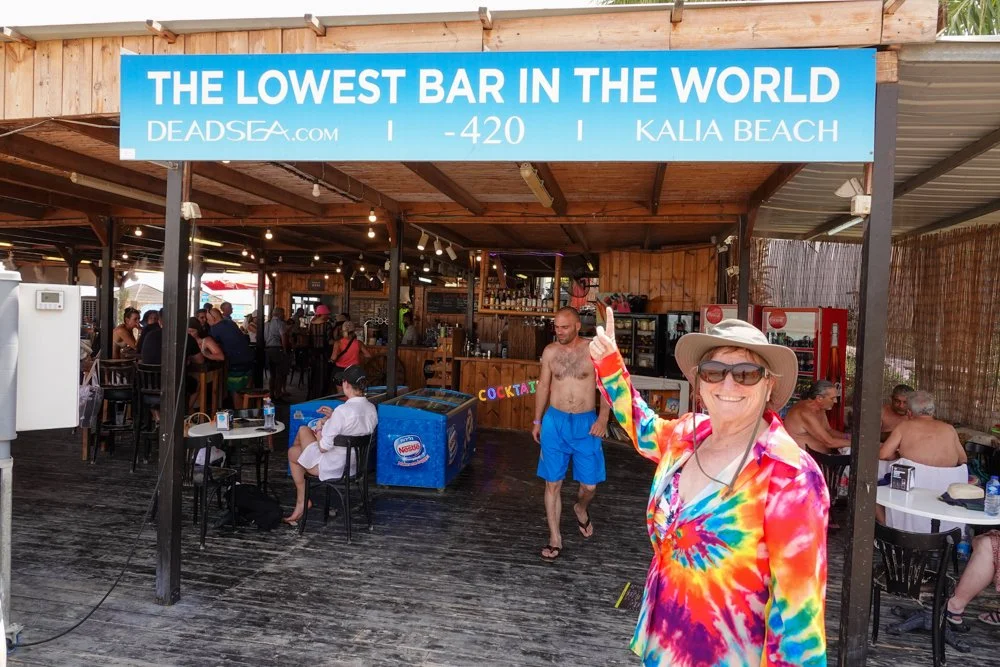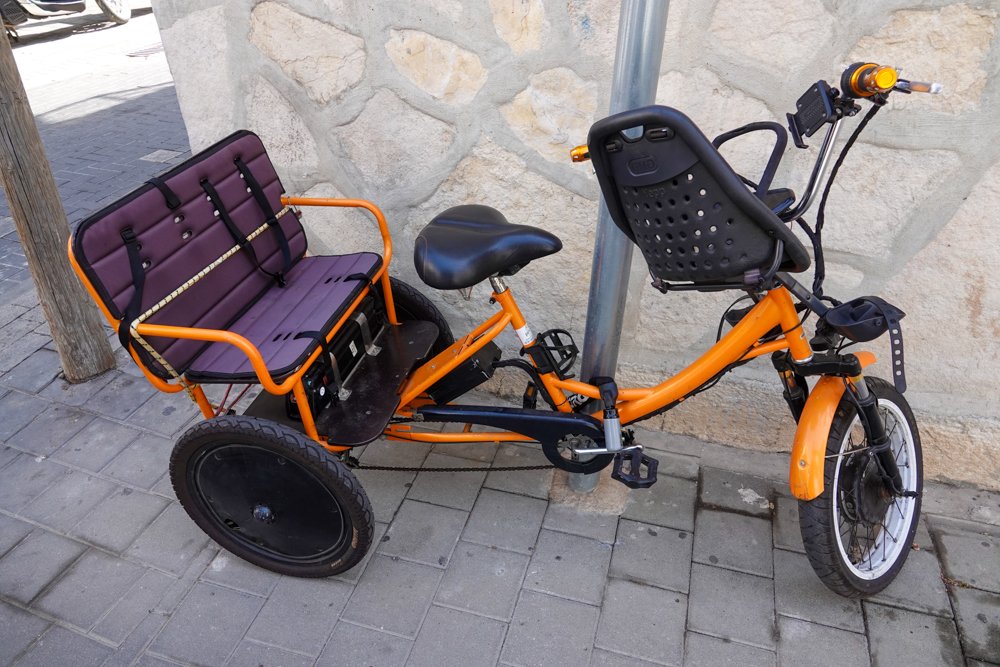Church of the Holy Sepulchre
The Via Dolorosa ends at the Church of the Holy Sepulchre. Christians believe this site to be the most important events as it includes both the hill of Calvary and the tomb where Jesus rose from the dead. Yes, it’s all under one roof. That’s why I included the first photo, just a file photo, not mine. The church is a sprawling mishmash of different areas and architectures. It was somewhat gloomy with scars of destructions and reconstructions. We could see work being done while there. It also has a confusing conglomeration of over 30 chapels and worship spaces. Several masses were underway while we were there.
I went to this church twice. Vicky was sick the first day our group went but our guide took her and I back on another morning. My posts here will include photos from both of my trips. Like with the Via Dolorosa, Calvary Hill and other sights do not coincide with the visions in my mind of these places, but such is life.
You can see the church from above with its two blue-grey domes and its red-topped, cropped bell tower. The entrance is just to the right of the bell tower. The tan building top area is the church, set tightly within the surrounding buildings.
Immediately after entering the church, we turned to the right and climbed a steep, curved flight of stairs, which you can see in the 2nd photo. In essence, we were ascending the hill of Calvary. It’s about fifteen feet up the ‘hill.’
Upon arriving at the top of the stairs, there were two chapels, side by side. The chapel on the right is the Catholic Chapel of the Nailing to the Cross. There was a mass underway there when we arrived. The Greek Orthodox Chapel of the Crucifixion is on the left and is in the photo below. Underneath the Greek altar is a silver disc which is believed to be the where the cross stood. There is a round hole in the disc. Vicky and I both got down on our knees and reached down through the hole to touch the limestone rock. You can see some of the rocks through the glass on either side of the altar.
Another steep flight of stairs in the rear of the Greek chapel leads back to the ground floor. There lies the Stone of Anointing, a slab of reddish stone flanked by candlesticks and overhung with eight lamps. You can see this in the fourth photo, and this is where Jesus’ body was anointed. Pilgrims were kneeling and kissing the stone with great reverence.
I included the next photo just to show another of the many chapels and worship spaces. This was a group of Coptic Egyptians which is one of the many denominations sharing parts of the church.
I don’t know that I ever actually thought about how far it was from Calvary Hill to Jesus’ tomb but I’m sure that I expected that it was farther than 30 yards. It’s not. That’s why all of this can be under one roof of this church.
Noa, our guide, explained so many basics to us and I really appreciated the understanding about these things that it gave me. In this case, Jesus was crucified on a Friday afternoon. That meant that it was almost the Sabbath. That didn’t allow time to take his body to Nazareth or Capernaum for burial. It couldn’t be left out during Sabbath or animals might get it. So, a well-off follower, Joseph of Arimathea, happened to have a family tomb cave nearby and offered it up for Jesus’ burial site, given their limited options.
The next photo is just of the central worship space in the Church of the Holy Sepulchre. The Edicule marking the location of Jesus’ tomb is on the left in this photo.
The Main Rotunda above the Edicule is in the below photo with the rays of sunlight shining down towards the Edicule.
Our guide took us into an authentic first century burial cave near the Edicule and we were able to crawl into the side burial caves or chambers. You can see the main entrance to this cave in the next photo.
The next photo is the entrance to the Edicule. Even at 6am, it was blocked off by the grate as there was a Mass being said inside. We only had to wait about two minutes to enter, but when we did, another group about to have another mass rushed past us and into the Edicule. Vicky made her way inside, but an extremely tall Franciscan blocked my entrance. I don’t believe that he spoke English but with hand gestures and words, I managed to have him let me pass and go inside.
Inside is a small space. You can see the people that rushed past us. The woman has her hands on the marble where Jesus’ body was laid. But as we couldn’t see any way to squeeze inside, we decided to exit. But then the same Franciscan would not allow us to leave. We didn’t know why but both Vicky and I were insistent and used lots of hand gestures and he eventually recanted and let us back out. Whew!
































































































